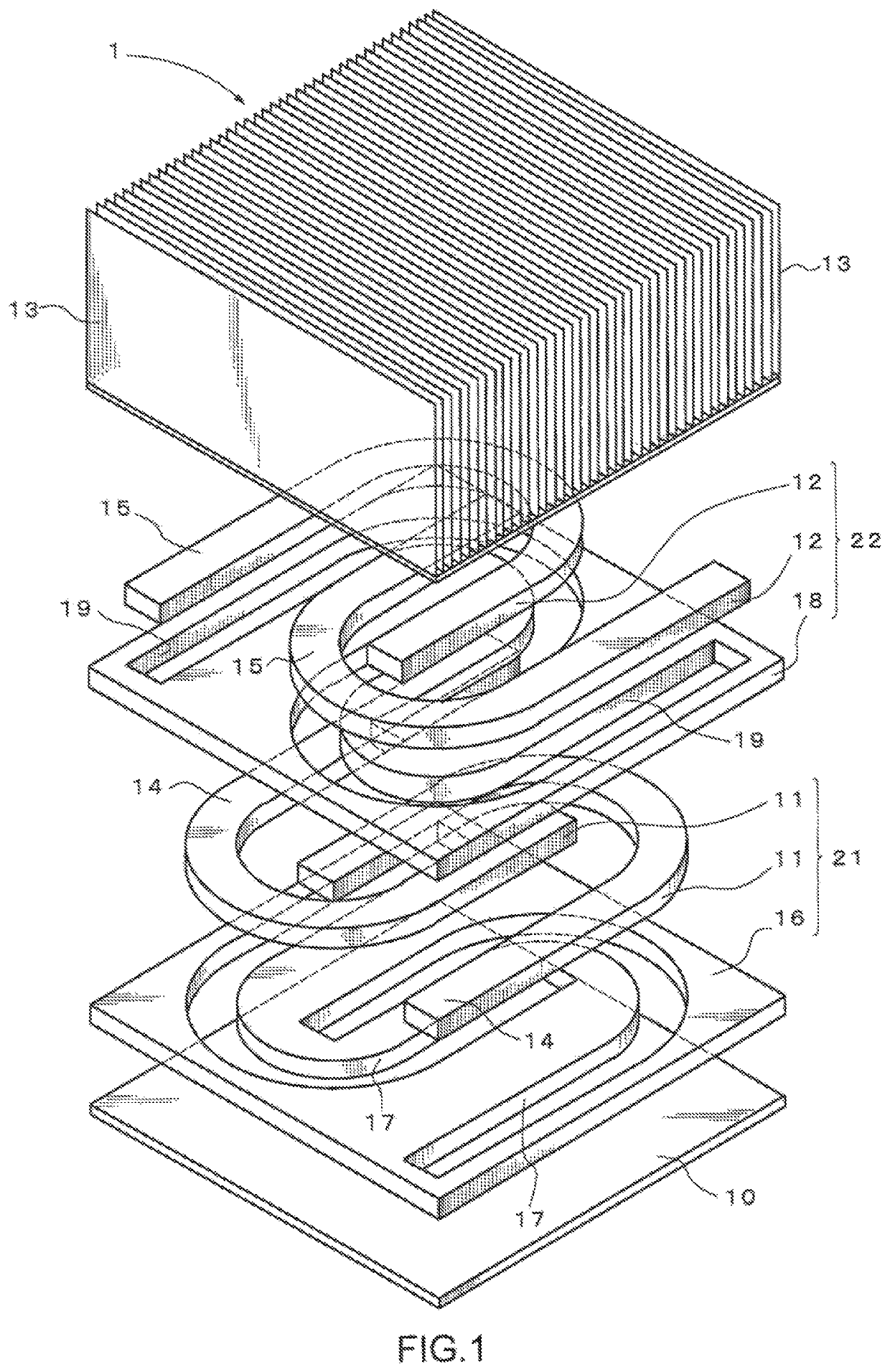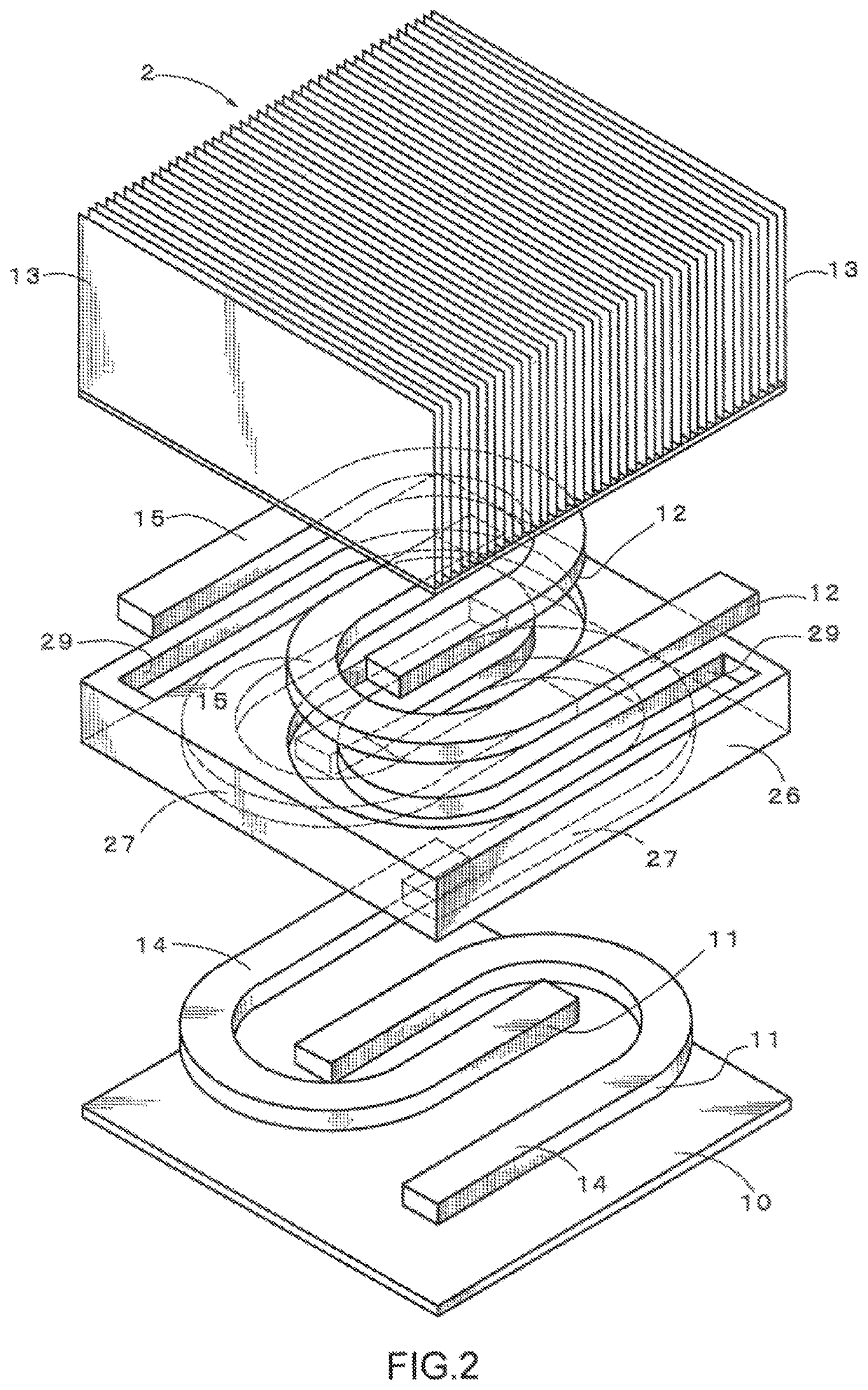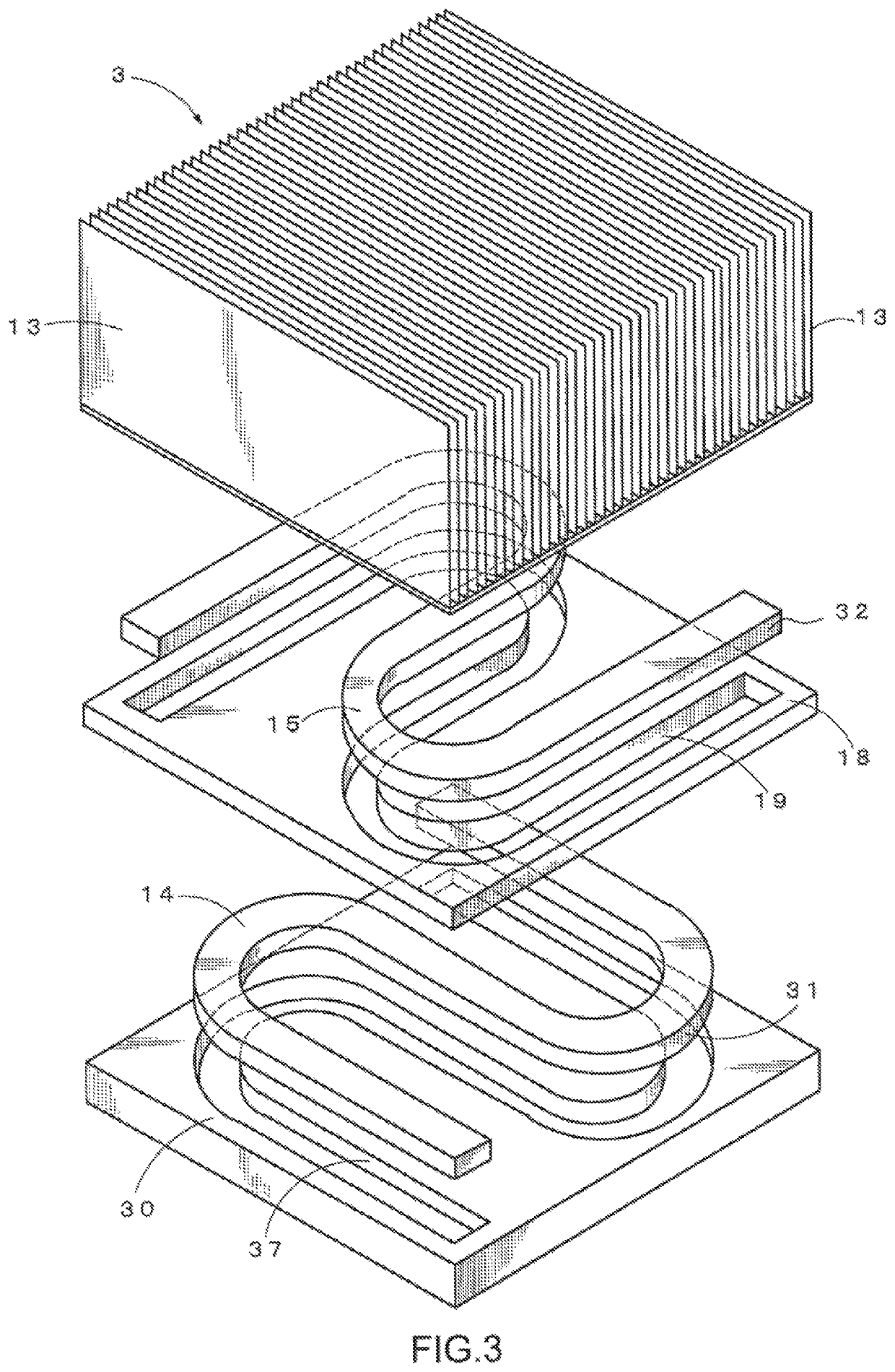Heat sink
a heat sink and heat sink technology, applied in the field of heat sinks, can solve the problems of insufficient thermal diffusion on inability to and insufficient thermal diffusion in the surface of the heat receiving plate, so as to improve the cooling performance of the heat sink with the heat pipes formed from the tube body, improve the heat dissipation efficiency of the heat dissipation fins
- Summary
- Abstract
- Description
- Claims
- Application Information
AI Technical Summary
Benefits of technology
Problems solved by technology
Method used
Image
Examples
example
[0068]Next, examples of the present disclosure will be described. However, the present disclosure is not limited to these examples unless the invention departs from the spirit thereof.
[0069]In the heat sink 1 according to the first embodiment, the arrangement of the second heat pipe 12 of the second heat pipe layer 22 in plan view was in an aspect in which the arrangement of the first heat pipe 11 of the first heat pipe layer 21 is reversed. Instead of this, as Example 1, as shown in FIG. 5, a heat sink 5 was used in an aspect in which an arrangement of the second heat pipes 12 of the second heat pipe layer 22 in plan view was such that the arrangement or the first heat pipes 11 of the first heat pipe layer 21 in plan view was rotated by 90° about the orthogonal axis to the surface of the heat receiving plate as the rotation axis.
[0070]As a comparative example 1, as shown in FIG. 6, of the heat sink 1 according to the first embodiment, a heat sink 6 not provided with a second heat p...
PUM
 Login to View More
Login to View More Abstract
Description
Claims
Application Information
 Login to View More
Login to View More - Generate Ideas
- Intellectual Property
- Life Sciences
- Materials
- Tech Scout
- Unparalleled Data Quality
- Higher Quality Content
- 60% Fewer Hallucinations
Browse by: Latest US Patents, China's latest patents, Technical Efficacy Thesaurus, Application Domain, Technology Topic, Popular Technical Reports.
© 2025 PatSnap. All rights reserved.Legal|Privacy policy|Modern Slavery Act Transparency Statement|Sitemap|About US| Contact US: help@patsnap.com



